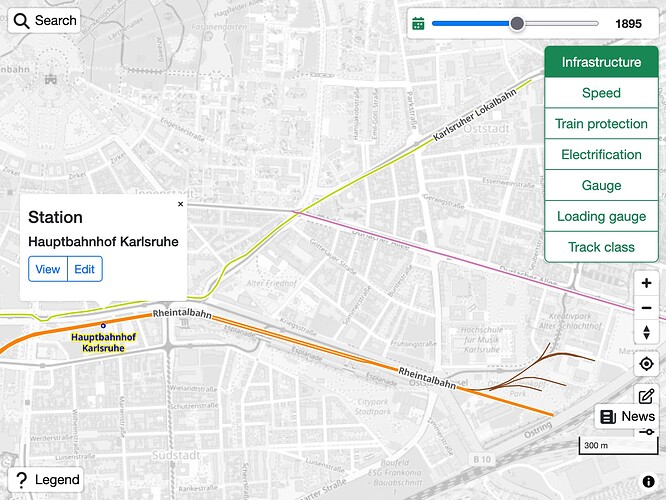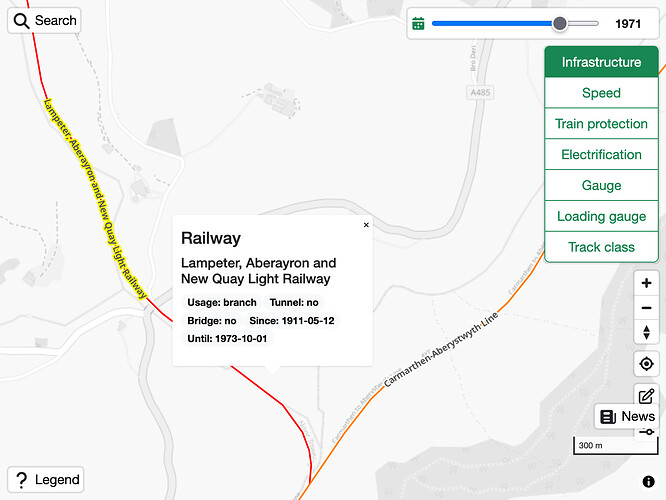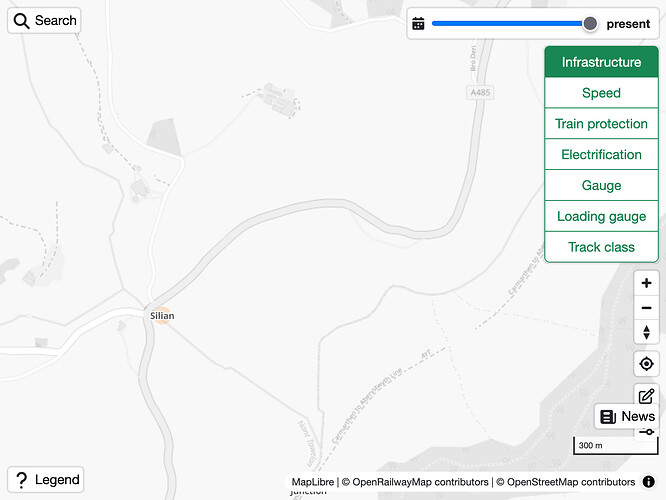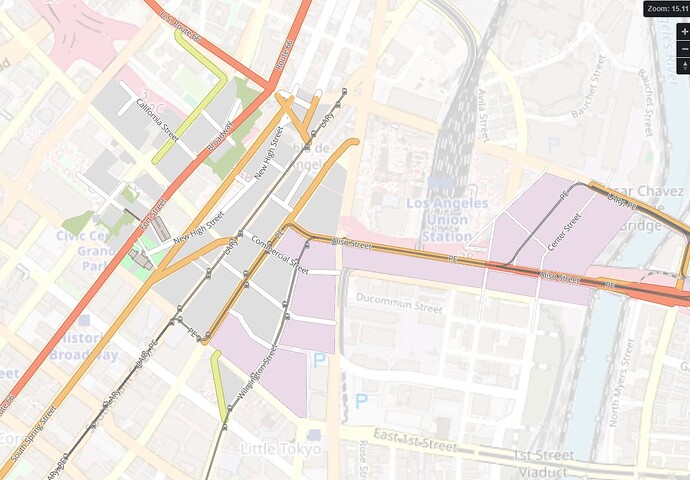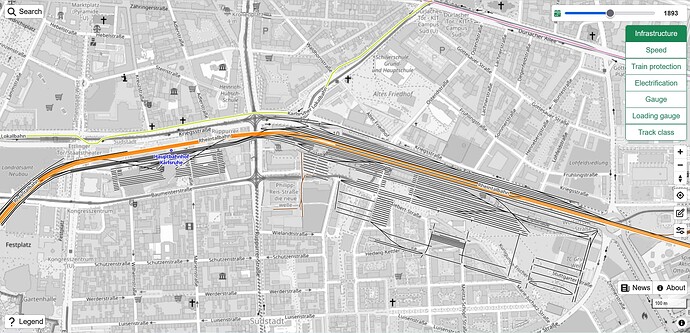The next generation of OpenRailwayMap now sources its historical railway data from OpenHistoricalMap. ORM’s Infrastructure layer sports a new date filter. When you set it to any year in the past, the layer switches from OpenStreetMap data to OHM data. Hover over any rail line to highlight it. Click on it to see basic details such as the name and dates of significance or an option to edit the map. For example, ORM now features the former Hauptbahnhof Karlsruhe, which was decomissioned over a century ago and has since been replaced by an esplanade:
This layer is available at zoom level 5 and beyond. At low zoom levels, it only shows ways tagged usage=main or usage=branch, but you can zoom in to see more. Auckland’s former tram system comes back to life with more detail than would be possible in OSM:
Along with this change, ORM no longer displays demolished railways from OpenStreetMap. Any way tagged railway=abandoned or railway=razed no longer appears on the map, except to the extent that another primary feature tag such as highway=cycleway causes it to appear on an OSM basemap. In their place will be any railway=rail that is available in OHM during the selected time period. This Beeching-axed branch line in Wales comes from a railway=rail in OHM instead of a railway=abandoned in OSM:
For years, demolished railways have caused serious friction within the OSM community. Hopefully this OHM–ORM integration will provide a viable alternative to railfans and history buffs so that we can all focus on what we map best and avoid getting in each others’ way. This is a major accomplishment for all three projects: it affirms the value of this community’s diligent research into rail history, validates ORM’s decision to make a break with the past and embrace modern vector map technology, and enables OSM’s rail mappers to come out of the shadows and map rail history without apology.
There aren’t any current plans to dismantle the Railway style available on our homepage, but the development team would be interested in your feedback about how the two should coexist. Should we try to differentiate the Railway style for a less technical audience, aim for feature parity with ORM’s Infrastructure layer as a sort of entryway into ORM, or combine efforts somehow?
This integration came together rapidly thanks to ORM developer Hidde Wieringa. And it’s just the beginning: anyone can freely reuse OHM’s vector map tiles and stylesheets, design a custom stylesheet based on our tiles, or produce fully custom tiles based on our database dumps or minutely replication files. If you use OHM, please give yourself some credit on our bibliography and spread the word on social media.
Now that more eyes are on OHM, please reach out to any new railfans you see editing the map. Offer them a warm welcome, guide them through the process of finding suitable sources, and share our particular approach to modeling the world. Let them know about any unknowns they can help out with. We’re in it for the long haul!
